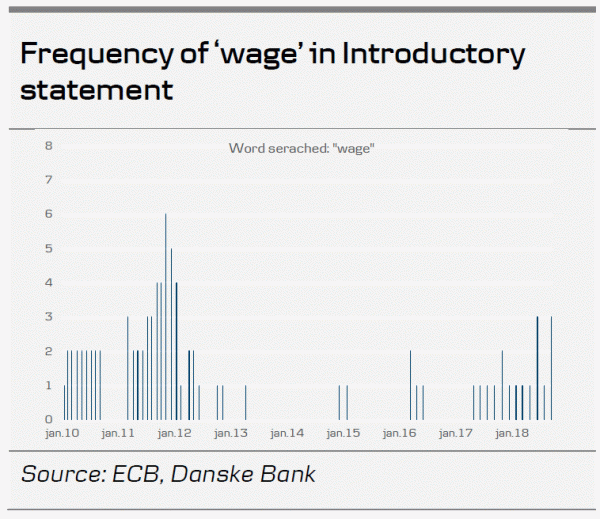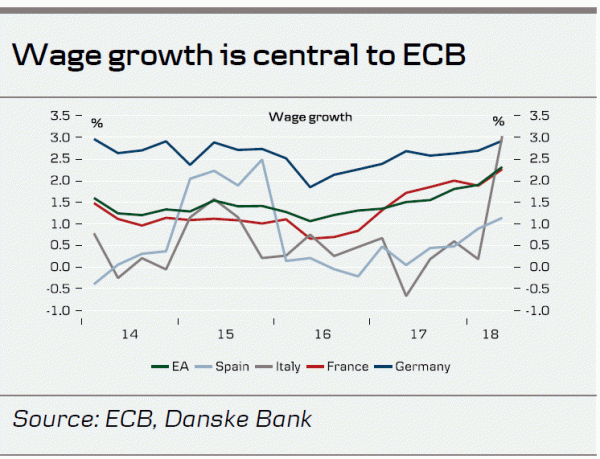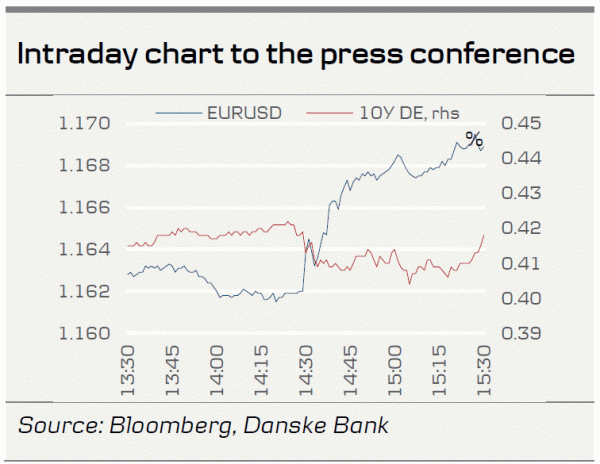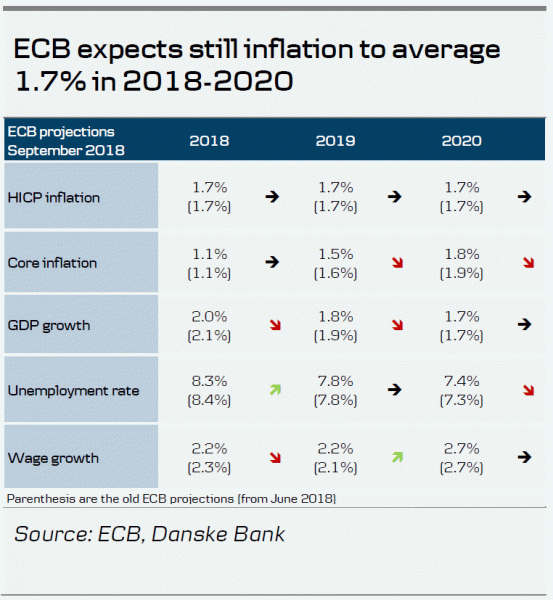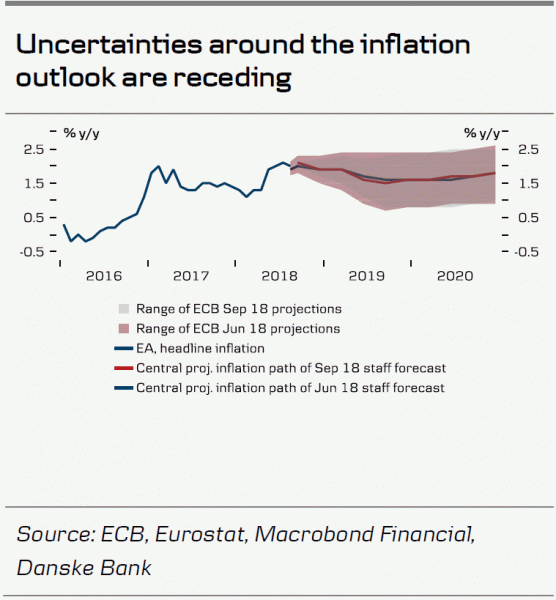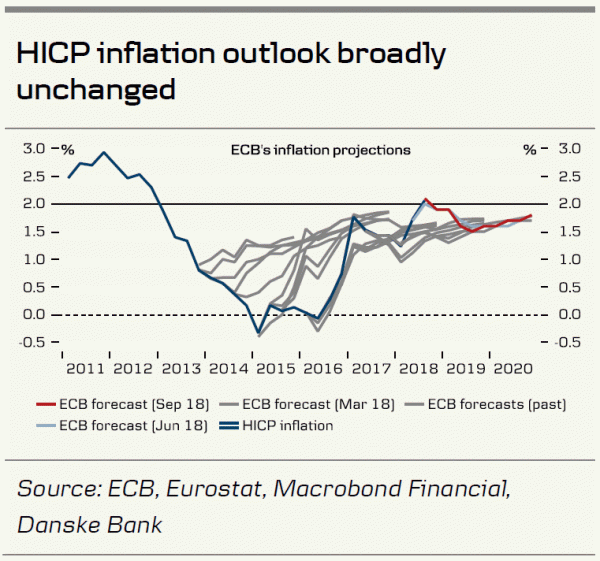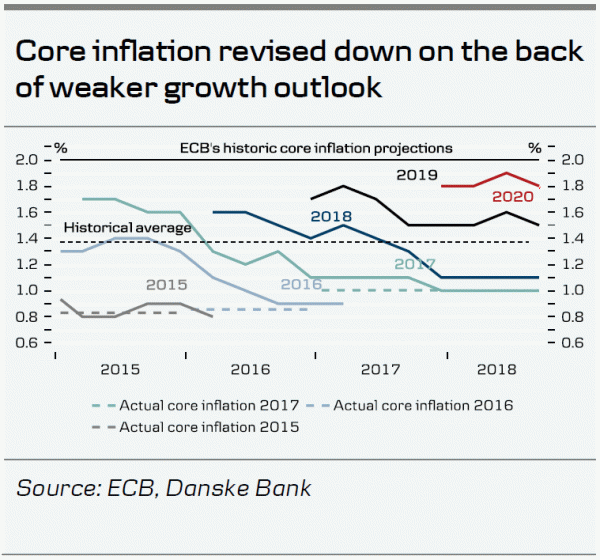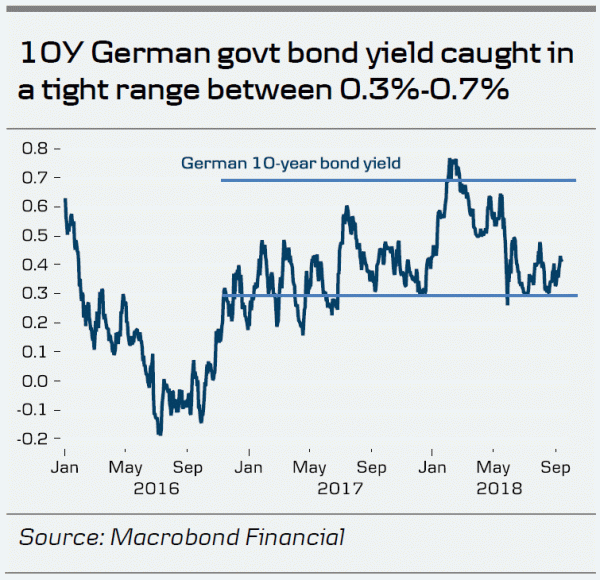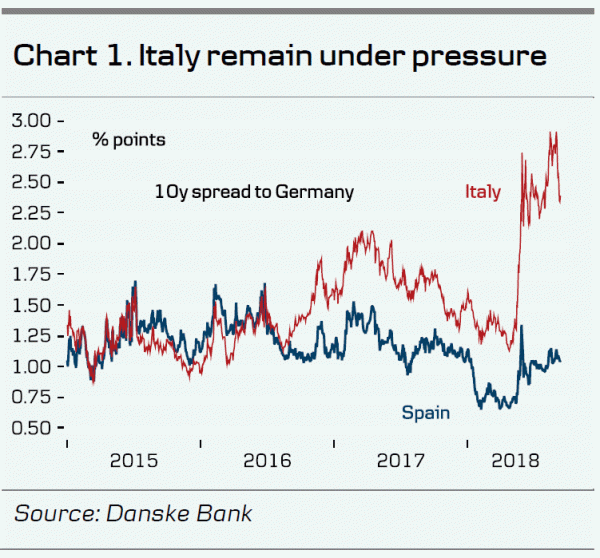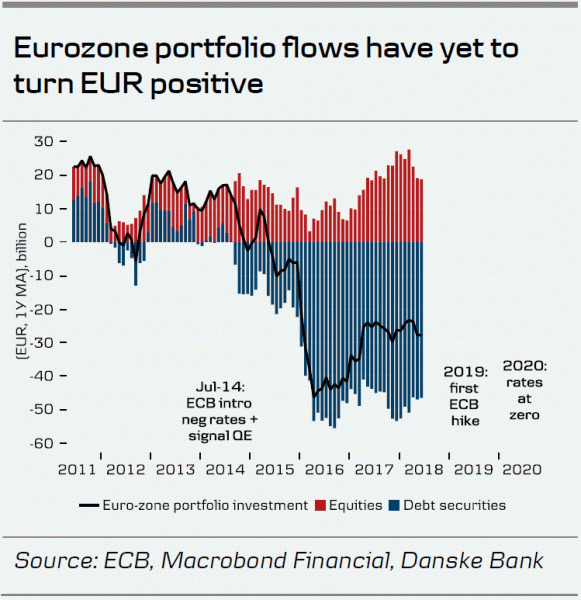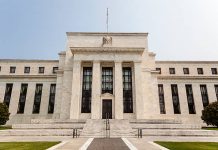- ECB didn’t deliver new policy signals during today’s meeting, which on the face of it was rather uneventful. As usual, the devil is in the detail and today’s meeting highlighted risks ‘gaining more prominence’ and the confidence in its inflation outlook prevailed.
- Rates markets were trading broadly sideways through the press conference, while the EUR/USD traded higher also, weighted by the weak US CPI number.
Just like the July meeting, today’s meeting was cut short of the usual 15:30CET limit. The most interesting today was the update of the staff projections (see below) and the inflation assessment: not to forget the increased prominence of the wage dynamics in the introductory statement (IS) and the press conference (‘wage’ was mentioned three times in the IS).
The reinvestment strategy was not discussed today, not even when to discuss it, although he later clarified it would be in October or December this year. In June Draghi said that they would revisit this in the coming meetings. We favour a decision at the December meeting. It was mentioned that the capital key is the guiding principle.
ECB staff projections
ECB’s new economic forecasts saw downward revisions to the growth outlook but broadly unchanged confidence in building up inflation pressures:
- Rising global headwinds to growth outlook: Reflecting weaker external demand, the ECB lowered the growth forecasts for 2018 to 2.0% – in line with our view – from 2.1% and for 2019 to 1.8% from 1.9%, while leaving the projections for 2020 unchanged at 1.7%. Risks to the growth outlook were still judged to be broadly balanced but uncertainties related to rising protectionism, vulnerabilities in emerging markets and financial market volatility have gained more prominence.
- Unchanged inflation confidence: The ECB expects headline inflation to hover around current levels for the remainder of the year, while core inflation is expected to pick-up toward end-2018. Draghi stressed that underlying inflation pressures remain subdued, but at the same time rising wages (2.3% y/y in Q2 18) means that uncertainties around the inflation outlook are receding. Core inflation was slightly revised down reflecting the weaker growth outlook. But upward revisions to the energy component resulted in an unchanged headline forecast profile. The ECB still projects core inflation to accelerate significantly to 1.8% in 2020, supported by an expected strong pick-up in wage growth to 2.7%. We see core inflation only at 1.5% in 2020, as the pass-through from higher wages will happen more gradually in our view.
Fixed income
The ECB did not provide the market with much new information, and the impact on the market from today’s meeting on the future is likely to be modest. Hence, we expect that Bunds will still be caught in a narrow trading range between 0.3% and 0.70%. The “floor” for the 10Y German government bond will continue to be 0.3%, which it has been for almost two years despite such significant events such as Frexit (the French presidential election) and more recently the EM crisis and the uncertainty regarding the Italian fiscal policy as shown below.
However, as we are getting closer to exit of the QE as well as possible rate hikes, then it is difficult to see 10Y German government bond yield decline below 30bp. The combination of low supply and reinvestment need relative to issuance of govts, corporates, covereds and financial will keep the Bund ASW-spread in a tight range between 50-60bp for the coming months.
The spread between Italy and core-EU is still very high, and ECB is not expected to step in to support Italy through additional purchases of Italian government bonds. This is also very visible in the QE-data for Italy. Here, the ECB continue to follow the “capital key rule”. ECB has also made it clear that no amunt of QE buying in a sovereign bond issuer can help the market, if the issuer does not follow the EU rules on fiscal policy. Hence, for the BTPS-Bund spread to tighten we need to see more information from the Italian government on the budget for 2019, and that they will comply with EU rules.
FX: ‘confident’ ECB but still too early for sustained EUR uptrend
With Draghi’s confidence that the euro zone is heading in the right direction dominating any dovish impulse from the small downward growth adjustments, EUR crosses jumped during the press conference with EUR/USD reaching 1.1697, helped also by a weaker-than-expected US inflation print. While it is still a tad too early for the FX market to discount an end to negative rates – which will be key for delivering more broad-based EUR strength – as we argued in last week’s FX Strategy – Monetary conditions have started to turn EUR positive, 7 September, monetary conditions have started to turn less EUR negative judging from notably M3 growth. That is in our view a pre-warning of what to watch as the ECB stops adding to its balance sheet by year end.
That said, we still see a risk that USD strength will linger in H2 due to the prospect for relative rates to move in favour of the greenback and trade woes and EM worries to weigh still. However, in relation to EUR, we are less worried about Italy-led risks near term, see Italian Politics Monitor: A postcard from Rome: the die is cast! , and hence the potential for a significant dip in EUR/USD near term is smaller than we previously anticipated and dips below 1.15 should be bought into. The key trigger for EUR/USD to invoke on a more sustained uptrend remains a turn in capital flows (see chart) and those will likely not be triggered until the market sense that the ECB is growing ever more confident in initiating a hiking cycle (not likely until H1 2019). But, it is still too early for a sustained EUR uptrend driven by ECB in our view.




